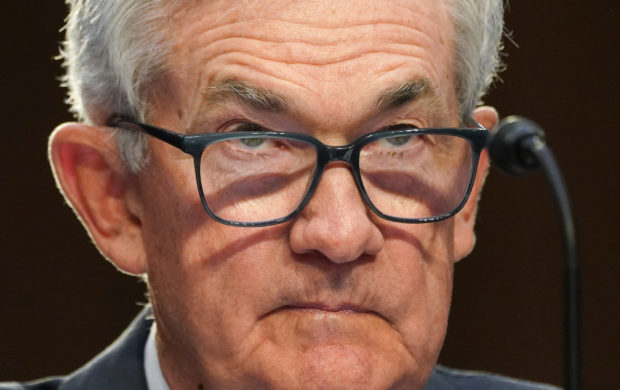Fed’s Powell faces political storm, policy minefield over SVB oversight

WASHINGTON – The Federal Reserve is expected to raise interest rates by a quarter of a percentage point on Wednesday, a decision that will land amid a brewing political storm over the U.S. central bank’s oversight of collapsed Silicon Valley Bank and with the financial world hanging on the words of one man: Jerome Powell.
In the second institutional crisis faced by Powell during his five-year tenure as Fed chief, SVB’s March 10 failure has drawn scrutiny across the political spectrum, with calls to reform the central bank’s governance and oversight reminiscent of what happened after a furor over Fed officials’ stock trading erupted in 2021.
Two of the Fed’s 12 regional bank presidents resigned as a result of that scandal and Powell launched a fast overhaul of the central bank’s ethics rules as criticism mounted.
Similarly, Powell recently said the failure of California-based SVB warranted “a thorough, transparent, and swift review” of how the Fed supervised the nation’s 16th largest bank, an institution with little profile on Main Street until its troubles rocked confidence in other mid-sized lenders who are important providers of business and consumer credit.
The sudden threat of financial instability stemming from a Fed-supervised institution has complicated monetary policy decisions that had been tightly focused on raising interest rates to fight inflation, and raised the stakes for Powell in explaining the outcome of this week’s meeting and the Fed’s response to the SVB collapse.
Banks sought record Fed liquidity in wake of SVB collapse
As policymakers kicked off their latest Federal Open Market Committee meeting, U.S. Senator Rick Scott, a Republican and possible 2024 presidential candidate, demanded in a letter to Powell that the Fed chief address the “failures and malfeasance” behind the collapse of SVB and another U.S. lender, Signature Bank, and “name the individual(s) being fired.”
Similar criticism has come from the left, with Democratic U.S. Senator Elizabeth Warren, a longtime Powell opponent, saying she had lost confidence as well in San Francisco Fed President Mary Daly, whose bank was responsible for supervising SVB.
The Fed has said its review of SVB’s supervision will be finished by May 1 and released to the public.
Still, turbulence in financial markets and the banking system is likely to feature prominently in Powell’s post-meeting news conference, which is scheduled to begin at 2:30 p.m. EDT (1830 GMT). The U.S. central bank will release its policy statement and new economic projections from Fed officials at 2 p.m. EDT.
Communications challenge
Banking stocks that lost roughly 20 percent of their value over two turbulent weeks appeared as of Tuesday to have found some footing in the wake of the Fed’s latest maneuver on a Sunday evening to restore confidence in the financial system.
Yields on Treasury securities that had plummeted in a flight-to-safety by investors have also clawed back some of that ground. Everything Powell says – and how he says it – could determine if that nascent calm holds.
Market expectations are tilted heavily towards the Fed approving another quarter-of-a-percentage-point rate increase, which would lift its benchmark overnight interest rate – the federal funds rate – to the 4.75 percent-5 percent range. The rate increases are meant to slow spending on goods and services and lower inflation back toward its annual 2 percent- target from a level more than double that.
Less clear, and arguably more important, is how a new policy statement assesses the risks to the economy posed by the recent trouble in banking markets, how it characterizes the likely need for further rate increases, and how high officials think the target interest rate will rise by the end of this year.
As of December, Fed policymakers thought the fed funds rate might stop between 5 percent- and 5.25 percent-, but higher-than-expected inflation had led Powell to indicate the stopping point might be even higher.
The SVB implosion puts that scenario in doubt, and, whatever the outcome of the meeting, it will fall to Powell to explain how the pieces of a complicated puzzle fit together.
“Economic data points toward one outcome while conditions in financial markets favor the opposite … Communication will be a challenge,” as the Fed tries to explain what seems a no-win policy choice, said Ryan Sweet, chief U.S. economist at Oxford Economics.
Raising rates might keep the focus on inflation but add to bank stress; pausing rate hikes until financial markets are settled might seem prudent, but could also appear to weaken the Fed’s commitment to taming high inflation and make it seem as if the situation in the banking sector is worse than it is.
Former Fed policymakers have been weighing in from the sidelines – differing themselves over whether continued rate hikes or a sudden pause poses the greatest risk.
The amplified politics of the moment are something Powell will also have to navigate – and could well get worse over time, wrote Brian Gardner, the chief Washington policy strategist for wealth management firm Stifel.
Between a high-profile bank failure and the memory of the Fed trading scandal, “calls to break up the Fed or audit the Fed could reemerge,” Gardner said. “Those efforts will likely fail, but given the rise of populism among Republican lawmakers and the increased influence of progressives among Democrats, a new, larger, bipartisan group of anti-Fed lawmakers could emerge on Capitol Hill.”
RELATED STORIES:
Fed, US banks in focus as mood improves on Credit Suisse rescue
SVB collapse puts Fed’s faith in a strong, low-risk financial system to test